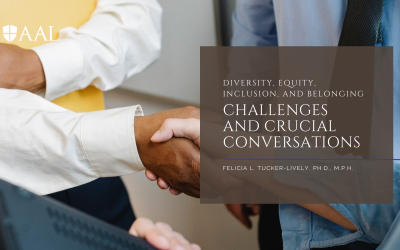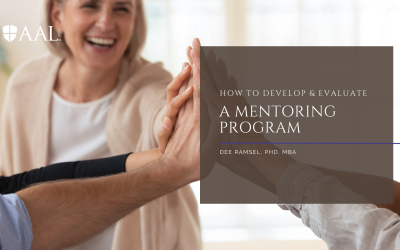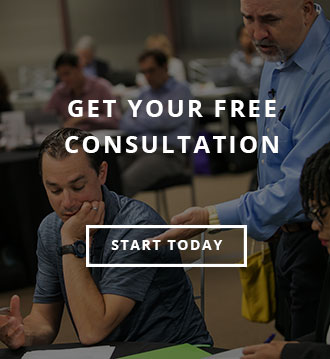Teaching and Learning
Subscribe to NewsletterLatest News
How to Deal with Dissent
When it comes to dissent, my perspective is perhaps somewhat unusual if not unique. As a middle manager for 20 years, I often encountered dissent when presenting and enforcing policies that in some cases I didn’t agree with, either. And as someone who has also been middle-managed, I have on occasion played the role of dissident myself.
In both situations, I’ve had many opportunities to observe how various leaders, from managers to presidents, have dealt with dissent. Three strategies seem to be most common.
Some leaders try to punish or make examples of people who openly disagree with them. They might be somewhat limited in what they can do, because of union protections, EEOC regulations, or (in the case of college faculty) tenure, but managers can always find ways to make someone’s life miserable, if they want to: less-than-desirable assignments; arbitrary denial of legitimate requests; sudden, strict application of previously ignored “policies.”
This is a risky tactic, because at some point it becomes apparent to everyone what’s going on. Of course, some managers might think that’s a good thing, that occasionally you have to “knock some heads” in order to get everyone else to “fall in line.” But what often happens is that even those employees who basically agree with the manager, or who don’t care for the dissident personally, begin, over time, to side with him or her against what they regard as petty and vindictive treatment.
Meanwhile, the manager in question may find his or her moral authority slowly draining away. That’s why, in my experience, those who take this approach often end up being more damaged professionally than the person they set out to punish.
Another way some managers deal with dissidents is simply by ignoring them–and I mean ignoring them altogether. They don’t speak to them, don’t respond to their e-mails, don’t acknowledge them in any way. They decline to put them on committees or other working groups, refuse to recommend them for assignments, and fail to recognize their positive accomplishments. In short, they act as if they don’t exist.
This strategy, too, is unlikely to work, because it’s almost impossible to completely ignore people who work in your department. In fact, truly committed dissidents are often especially difficult to ignore, because they’re always in your face. Trying to act as if they don’t exist is liable to infuriate them even more, leading to further confrontations. Also, even dissidents (and sometimes especially dissidents) make positive contributions, and the manager who refuses to acknowledge as much ends up looking like a churl.
Lastly, some leaders deal with dissidents by attempting to win them over, to co-opt them and thus bring them into the fold. This is often accomplished through bribery, by offering them choice assignments or placing them on “key” committees where–perhaps after many years–their voices will at long last be heard. Or so they think. In reality, this is usually just a ploy, an attempt to make the dissident think that he or she has a legitimate opportunity to effect change when in fact the outcome has already been determined and leadership has no intention of considering opposing viewpoints.
The reason this strategy usually fails is that few genuine dissidents fall for it, and those who do end up angrier than ever once it’s clear that they don’t really have a voice.
The best and most effective leaders eschew all three of these strategies. Instead, they try to treat dissidents, as much as possible, just like everyone else. Such leaders tend to be open-minded, inclusive, and collaborative anyway–that’s what makes them effective–and so they listen to dissenting voices just as much as they listen to any other voices–no more, perhaps, but certainly no less.
In the end, these leaders may end up making decisions that the dissidents approve of, because (and let’s not lose sight of this point) the dissidents are often right. But even when they make decisions contrary to the dissenting point of view, at least the dissidents feel that their voices have been heard, that they’ve been taken seriously, and that they are free to speak out again on the next issue.
Indeed, the very best leaders welcome a healthy dissent, because it keeps them honest and because they understand that, if no one is questioning what they’re doing, they’re probably not doing anything worthwhile.
Author:
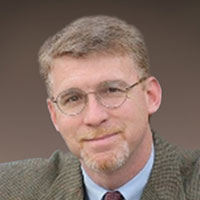
Rob Jenkins
Professor, AAL Senior Fellow, co-author of The 9 Virtues of Exceptional Leaders
Transforming People and Organizations: The Nexus of Leading and Learning
As summer approaches, so do a number of Academy for Advancing Leadership professional development programs. Some of these programs are focused on leadership development and others address pedagogy and developing the skills of a master teacher.
While the program curricula differ, leading and learning exist in a nexus. Effective teachers not only convey knowledge and facilitate discovery; through role modeling and mentoring they affect students’ attitudes, behaviors, and career aspirations. For many of us a teacher stands out as a singular influence in shaping both our character and our vocation—and that is leadership.
Likewise, effective leaders encourage us to learn new things, to question our assumptions, to grow through challenging ourselves and others, and to make a difference. The titles and job descriptions are different, but teachers are leaders and leaders are teachers.
Largely due to the research of James McGregor Burns, leadership theory has focused much attention over the past three decades on “transformative” or “transformational” leadership. Leadership is about creating meaning, inculcating values, and transforming people and organizations. In their book Leadership that Matters, Sashkin and Sashkin identify four specific transformational leadership behaviors.
First, by using communication skills, transformational leaders actively listen, provide useful feedback, and convey complex ideas clearly. They are masters of creating and using metaphors to explain and inspire. Second, through consistent and credible actions, transformational leaders build trust. They keep promises, meet commitments, and tell the truth. Third, transformational leaders care about people. Caring includes respecting differences and valuing special skills and abilities. It’s reflected in simple things like knowing people by name. Finally, transformational leaders create opportunities by developing followers and making sure they have the requisite knowledge, skills, and resources needed to succeed. Transformational leadership is about fostering an environment in which people can learn and grow.
I have seen these behaviors in those who effectively lead universities, colleges and schools, and departments. But I have also experienced them in the classroom, in the actions of those who had no formal administrative or positional appointment. Teachers transform their classrooms, labs, and clinics as they engage the learners for whom they have accepted responsibility. Leading and learning always occur together as complementary ways of transforming people and organizations.
Author:
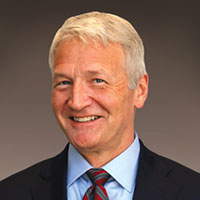
President of AAL & co-author of The 9 Virtues of Exceptional Leaders and 31 Days with the Virtues
Diversity, Equity, Inclusion, and Belonging: Challenges and Crucial Conversations
While the month of February marks Valentine’s Day and Presidents Day, it is also designated as the month to honor the triumphs and struggles of the African diaspora communities throughout American history. This period of observance serves as a time to reflect on Black culture and recognize Black achievement. Like many other annual observances, the time can represent a micro-moment spotlight or a lasting imprint. The intent is to hope for the latter, with society’s increased focus on diversity, equity, inclusion, and belonging (DEIB). In 2017, the American Council on Education expressed the position “Diversity is no longer simply a question of moral and social responsibility, but a matter of achieving excellence and gaining competitive advantages in the world we live in today.” Positioning Black History Month as an opportunity to listen, understand, appreciate, and learn more is another opportunity to build and sustain inclusive excellence.
The reality is leaders, educators, and professionals may experience information overload. There is the intent to make a difference or to be the change this world needs but questions come to the surface, i.e., What to do next? When is the “right” time to start an initiative? Why the continued focus on DEIB? How to obtain continuous support? These are but a few. It is easy to speak about what needs to be done or identify what needs to change, but challenges arise hindering tangible action and sustainable change to achieve inclusive excellence.
There are times when the intricate institutional culture, policies, and procedures in work and educational environments make DEIB efforts seem like drops in a leaky bucket. As a result, some professionals discover it is easier to remain silent; ignore the presence of discrimination; overlook the perceptions of exclusion; excuse preferential treatment; dismiss the incivility; and above all do not rock the boat. For some, their rationale is that the stress cracks in these complicated structures have existed long before these individuals arrived and will never go away. Although silence in the name of self-preservation may be a sentiment they endorse, Dr. Martin Luther King, Jr. cautions, “Time itself is neutral; it can be used either destructively or constructively. More and more I feel that the people of ill will have used time much more effectively than have the people of good will. We will have to repent in this generation not merely for the hateful words and actions of the bad people but for the appalling silence of the good people.” Thus, the role of leadership includes enhancing the effectiveness of DEIB efforts.
With the subject of diversity still causing politically sensitive and highly charged reactions, leaders may feel moments of uncertainty about missteps in DEIB areas with the constant challenge of finding ways to ensure everyone is valued and treated with respect. Patterson et al. state crucial conversations tend to involve high stakes discussion, varying opinions, and strong emotions. Leaders are charged to have crucial conversations to remove the barriers to inclusive excellence, deal with issues others are not prepared to handle, and address matters causing potential or actual tensions. As Angie Thomas wrote, “What’s the point of having a voice if you’re going to be silent in those moments you shouldn’t be?” Considering this idea another way, what is the point of leading if you’re not going to speak your truth, be authentic, and use your influence in moments your presence is needed?
Building and sustaining inclusive excellence involves listening to and recognizing the strengths of others as well as speaking up so that, at every level, behaviors are practiced that support inclusion, justice, and belonging in health education communities. With such leadership steps, leaders will position themselves to activate change, reorganize infrastructures, build accountability systems, assess processes, and establish tangible collaborations in DEIB efforts–one step and one day at a time.
Author:
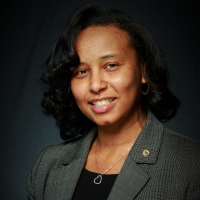
Vice President, AAL
Sources:
Aysola, Jaya et al. “Perceptions of Factors Associated with Inclusive Work and Learning Environments in Health Care Organizations: A Qualitative Narrative Analysis.” JAMA network open vol. 1,4 e181003. 3 Aug. 2018, doi:10.1001/jamanetworkopen.2018.1003
Munoz, Juan, et al. Climate Matters: Campus Leadership for Educational Success. Diversity & Democracy, AA&CU 17(4), 2014.
Patterson, Kerry, et al. Crucial Conversations: Tools for Talking When Stakes Are High. McGraw-Hill Contemporary, 2002.
Thomas, Angie. The Hate U Give. Walker Books, 2017.
Wilkerson, Isabel. Caste: The Origins of Our Discontents., 2020.
Williams, Damon. Strategic Diversity Leadership: Activating Change and Transformation in Higher Education. Stylus Publishing, 2013
How to Develop and Evaluate a Mentoring Program
Many institutions in the health professions have discovered the power of a well-run mentoring program. Mentoring can provide exceptional benefits, such as increased promotion and retention rates, higher faculty satisfaction, improved faculty development, better results in obtaining grants and publishing research, and more trust in the sponsoring institution. See, for example, “Mentorship in Medicine and Other Health Professions” and “Developing a Culture of Mentorship to Strengthen Academic Medical Centers.”
Developing an effective mentoring program is not overly difficult, but it does require thoughtful planning and sustained attention to ensure that faculty buy into the program and find it valuable. If your institution is interested in developing mentoring, the essential steps are provided below.
- Ensure support of the leader of the area implementing the mentoring program, discern his or her goals in developing the program, and gauge support of his or her boss. If the immediate leader is not interested in mentoring, such a program will be much more difficult. When instituting any change, the support of the leader’s boss is always very helpful, especially if resources are required.
- Undertake a needs assessment of faculty. This can take multiple forms such as individual interviews of key stakeholders, group interviews by faculty rank, online surveys, and even whole faculty meetings to receive input and generate interest.
- Administer personal assessments to all faculty. Frequently these instruments measure such constructs as communication style, workstyle, and/or team orientation. These results can be very helpful in matching mentees and mentors and particularly in assisting pairs to develop a strong relationship.
- Discuss the results of the needs assessments and personal assessments with leadership and then develop a customized mentoring program based on the results. The program should include a clear consensus on program goals, the structure of the program, training for faculty, an evaluation plan, and thoughtful steps to sustain the program.
- Training for faculty is essential to help mentors take a coaching stance in this role (as opposed to simply telling their mentee what to do) and to assist mentees in making optimal use of their mentoring experience. Likely part of the training will include coaching skills, how to use the results of the personal assessments to form effective relationships, role playing with feedback, and whatever other needs are demonstrated in the needs assessment.
- Evaluate the outcomes of the mentoring program. The important outcomes should reflect the goals of the program and should be shared with faculty. Adjustments to the program should be made based on mentee and mentor feedback.
- Typically, there are three types of outcomes. First are the “soft” outcomes like faculty satisfaction, faculty engagement, etc. Those are typically measured by survey. Next are the “hard” outcomes like number of research papers published, dollar value of grants received, etc. Those outcomes are usually measured by counting, like papers/dollars/number of faculty publishing, and comparing these figures to the same measures prior to implementing the mentoring program. Finally, a third set of outcomes relates more to the institution, such as promotion or retention rate, feeling supported by the institution, etc. These can be measured by counts or survey. The important part is that the outcomes are measures directly related to the goals for setting up the mentoring program.
- Typically, there are three types of outcomes. First are the “soft” outcomes like faculty satisfaction, faculty engagement, etc. Those are typically measured by survey. Next are the “hard” outcomes like number of research papers published, dollar value of grants received, etc. Those outcomes are usually measured by counting, like papers/dollars/number of faculty publishing, and comparing these figures to the same measures prior to implementing the mentoring program. Finally, a third set of outcomes relates more to the institution, such as promotion or retention rate, feeling supported by the institution, etc. These can be measured by counts or survey. The important part is that the outcomes are measures directly related to the goals for setting up the mentoring program.
- Finally, the leader needs to ensure steps are in place to make the program sustainable, not a one-time (“one and done”) training exercise. These steps can include the leader role-modeling coaching skills, support for mentoring such as providing coupons for coffee during mentoring meetings, building mentoring into existing systems such as annual reviews, reinforcement of observed mentoring, and booster sessions for faculty.
If you are interested in developing a mentoring program for one department, a school/college within the university, or the whole institution, assistance is available. AAL faculty have extensive experience in developing mentoring programs for the academic health professions and are available to consult with you. Just reach out to us at info@aalgroup.org so we can discuss how your institution can support faculty to help reach your goals of increased faculty retention and satisfaction, bringing in more grant dollars and research, and/or improving trust in your organization.

Dee Ramsel, PhD, MBA
Five Game Changing Resolutions for Leaders
New Year’s Resolutions have become something of a cliché in our culture, even the butt of jokes. Why? Because our collective failure to keep those resolutions—to lose weight, to save money, to call Mom every week—has rendered them semi-ridiculous, the stuff of late-night comedy and Sunday morning funny pages.
But that doesn’t mean reviewing our past performance in various areas of our lives and resolving to do better in the future isn’t a worthwhile activity. And although we can engage in such self-assessment at any time and should probably be doing it on a regular basis, the beginning of a new calendar year provides an excellent psychological impetus to plot a revised course.
In that spirit, then, and in keeping with one of our main themes in The 9 Virtues of Exceptional Leaders—that to become a better leader, you must first become a better person—I’d like to offer this short list of practical, imminently do-able behaviors that leaders should consider adopting in 2022.
Even if you’re already doing all of these, to some extent, I suspect you (like me) could probably do better. And the best part is that, if you can measurably improve yourself in these five simple areas, you might be surprised at how much of a positive difference it will make in your attitude, your relationships, and ultimately your leadership.
Read More
Yes, I know—you’d love to read more, if only you had the time. All that means is reading isn’t a priority for you, so I’m suggesting that, in 2022, you make it a priority. At the very least, schedule some time each day just to read something that no one is making you read, something that you’ve chosen.
It doesn’t have to be a lot of time—20 to 30 minutes a day would be an excellent start. And I strongly suspect you could free up an extra 20 or 30 minutes just by limiting your time looking at social media or watching Netflix. A lot of people read just before going to bed. Others get up a little earlier to have some quiet time. Find what works for you—but do find some time in your day to read.
What you read is up to you, but it doesn’t have to be just books about business or leadership. Enjoy some good fiction or popular non-fiction. Read up on historical time periods that interest you. Find out what your teenagers are reading and follow along, so you can see what they’re being exposed to. All of this will help make you a more thoughtful, intellectually well-rounded person, and that will have profound implications for your leadership.
Reflect More
At the same time, reading alone isn’t sufficient to bring about the kind of behavioral changes that will ultimately make you a better person and a better leader. The other half of the equation involves reflection, taking time to actually ponder, or think deeply about what you’ve read.
The incomparable value of great literature, whether fiction or non-fiction, is that it teaches us more about what it means to be human. For those lessons to be internalized, however, we must spend time thinking about them—considering them in context and asking how they might apply to our current-day situation and ultimately, to ourselves.
Tolkien’s Lord of the Rings and Malcom Gladwell’s Outliers, although very different works, have provided wonderfully enjoyable reading experiences for millions. The salient question, though, is what can you take away from your encounter with these literary powerhouses? What can Tolkien and Gladwell teach you about yourself? About others? About leadership?
So here’s a practical suggestion: Begin in January going to bed 30 minutes earlier so you can get up 30 minutes earlier and spend that time savoring a good book. Then, in the car on your way to work, turn off the radio and just think about what you read. You might be pleasantly surprised at some of the revelations that come to you.
No More White Lies
This is a hard one, but no less important for that. All of us, even if we’re basically honest in the areas that matter most (or so we think), have a tendency to tell “white lies”—seemingly minor untruths or half-truths, usually designed to save us embarrassment or make us look better to others. We say we were stuck in traffic when we’re late for a meeting, or claim we never received that important e-mail we failed to read—even though it isn’t true.
The problem is that lying, even in relatively minor ways, becomes habitual. And over time, white lies like these become like little leprous spots on our souls, slowly eating away at both our self-regard and our reputation. We tend to think that white lies don’t really hurt anyone, but that’s not true. They hurt us, even if no one else.
The good news is that truth-telling can become habitual, as well, if we commit to it regardless of the consequences to ourselves. And remember that there are two ways to avoid most of those white lies: You can admit that you were late because you overslept, or you can simply be on time to begin with.
Practice Empathy
It’s true that some people just seem to be more empathetic than others. But does that mean if you’re not “naturally” empathic, then you can’t learn to consider and take into account other people’s feelings?
Of course not. That’s another one of our main themes in The 9 Virtues: that you can improve yourself in all areas of your life. It is within your power to do so. Virtue can be defined as a set of behaviors that become habits, and thus virtue is ultimately an act of will. Telling the truth, even when it hurts, requires an act of will, and so does resolving to see and understand other people’s perspectives when they differ from your own.
The key is first of all to recognize that there are other perspectives, many of them quite valid—perhaps just as valid as your own, if not more so. This requires humility, which we would argue is the foundational virtue. At the same time, disciplining yourself to take other points of view into account is an excellent way of developing and internalizing the virtue of Humility.
So, the next time you’re in a situation where you find that others disagree with you or disapprove of your actions, instead of getting angry or frustrated, make a conscious effort to understand why they feel the way they do. When you’re having a difficult time understanding why an employee is behaving in a certain way, try putting yourself in that person’s shoes. That doesn’t mean you’ll come to agree with them or excuse their behavior—but it will be huge step toward communicating with them in a way that could well prove beneficial to you both.
Do a Good Turn Daily
Last of all—speaking as someone who has raised three Eagle Scouts—I’d like to recommend that you take a page from the Boy Scout handbook and look for an opportunity to perform an act of service for someone else every single day.
That person could be an absolute stranger. At a fast-food restaurant recently, I noticed a woman who was obviously homeless, sitting in a corner nursing a cup of coffee. I was just beginning to wonder what I could do to help her when the lady in line in front of me added a $5.00 gift card to her order and then dropped it off, without a word, at the woman’s table.
While such gestures are heart-warming, however, especially during the holiday season, we shouldn’t overlook the people we’re around all the time—those we work with, friends and acquaintances, even our own families. The act of service itself doesn’t have to be grand; it could be something as simple as doing the dishes because you notice your spouse seems tired. Nor does the act even need to be acknowledged. There are lots of things we can do for people that they never even know about.
As you resolve to look every day for opportunities to serve people, the first thing that will happen is that those opportunities will present themselves. The truth is, they were there all the time—we just weren’t necessarily looking for them. And the second thing that will happen is that we will become kinder, more empathic versions of ourselves, embodying the virtues of both Humility and Charity.
This New Year, along with resolutions that will mostly benefit yourself (like weight loss), try making some of these resolutions that will also benefit others—especially those you lead. As you do, you will notice a marked improvement in your self-regard, your ability to relate to and communicate with others, and your ability to inspire those you lead. You’ll be a better leader, precisely because you’ve become a better person.
Author:

Professor, Author and AAL Senior Fellow
Leadership Assessment: Power of Introspection
“I’m starting with the man in the mirror. I’m asking him to change his ways and no message could’ve been any clearer. If they wanna make the world a better place, take a look at yourself and then make a change.” These Michael Jackson lyrics may be familiar to some. For me, this chorus comes to mind when I’m conducting professional development sessions.
I firmly believe growth happens at the edge of introspection and self-development. I see the value in taking time to objectively learn more about ourselves, specifically “how” and “why” we do what we do. Research has shown the most effective leaders are those who understand themselves, their strengths and vulnerabilities.
Paul Sean Hill, a former flight director and director of mission operations for human spaceflight at NASA, shared that successful leaders may get comfortable with their own reputation. There is the tendency to focus on past personal or professional triumphs or thinking a team’s success is a result of their leadership alone. Continuing down this path may cause leaders to make poorly thought-out decisions, lose the ability to take risks, or become numb to the realities around them. Sometimes, a failure can snap leaders out of these patterns, but even that requires a leader to be honestly introspective and own up to their mistakes.
I am passionate about helping leaders unlock their leadership potential by performing optimally and finding ways to elevate others along the way. I am excited to say we strive to do just that at the Academy for Advancing Leadership through consultant services and professional development. Time and time again, I encounter leaders who view the assessment process as a waste of time or get fixated on one nuance or another. My approach is to encourage leaders to widen their lenses to avoid taking the bait and missing the cues. As tempting as it may be to spend time defending one’s actions, it is important to remember an assessment provides an accurate representation of a person by highlighting perspectives and differences.
There are no right or wrong answers. There is no good or bad behavioral style. Each leader is unique and has a valuable role within an institution or organization. Good assessments create a robust story of who the leader is, how they are likely to act in a given situation, what motivates them to do what they do, and which ways they demonstrate their acumen. With knowledge from the assessment, leaders may better understand their behaviors related to problem solving, influencing others, emotional intelligence, and otherwise engaging in today’s environments.
More than ever, leaders want and need to get it right. We all know the stakes are so high. The way things were once done will no longer work. Change is what we face. We must be open to continuous introspection to lead effectively.
Author:

Vice President, AAL
Leading Up
“How do you lead up in an organization?” Or the derivative, “How can I lead without having any power?” Those questions are being asked with increasing frequency, and I’ve been asking the same questions myself lately. After thoughtful consideration, the questions may be difficult, but perhaps the answers need not be.
A decade ago, I attended a speech on a university campus in the Midwest. Rev. Jesse Jackson spoke to an audience of roughly 200 citizens encouraging them to get out and vote. I’ll paraphrase his message:
“People often tell me they have no power at work. But that’s not true. They may not have formal authority of position, but they have power. They have the power of their beliefs, their convictions, and their values. They have the power of those people with whom they surround themselves. Indeed, we all have power. Now, we need to harness it.”
These sentiments are even more true today than ever before. We ask these questions, because we are working in outdated organizations. The old top-down traditional hierarchy no longer adequately helps our organizations meet their aims, nor does it fit the needs of our professional employees. Those who sit on top of traditional rigid pyramids are being usurped by new nimble, agile, and responsive organizations which have learned to harness the talents of their professionals.
These new organizations are mission and value driven. They need leaders of different types spread throughout the system. Michael Useem, author of Leading Up, wrote of the old and new models: “Old work rule: Leadership is something bestowed upon you by the company or organization. It comes with the authority associated with your job title. New work rule: Leadership is everyone’s responsibility. You must help lead your team, regardless of your job title or level of authority.” Keith Ferrazzi, author of Leading Without Authority, wrote,“Command and control from on high are giving way to insight and initiative down under.”
The classic hierarchical model seems to be all that we know; it seems to be all that we were taught and all that we experienced. It’s our mimetic isomorphism—our only view of what is and what could be. The model, however, is flawed in its conception and philosophy. A fundamental presupposition is that the person higher up the pyramid knows more than those below. This is a profound misunderstanding and misapplication in a professional organization.
Frederick Taylor made a science of worker efficiency during the Industrial Age. He designed a model for factories and automatons. Max Weber, fearful of too much power in the hands of a singular boss, envisioned a bureaucratic model whereby decision making would be diffused across the organization’s highly trained and objective professional workforce. Unfortunately, the model has become too rigid in structure, out of touch with the locus of the decision impact, and not responsively nimble.
So, the model in entrenched; it’s all we know; it’s not going away. What are we to do? How can we empower the bright professional workforce we employ? How can the intelligent and creative professionals lead up without formal authority?
We’ve got challenges from above. We’re expecting the leaders at the top of the hierarchy to change. However, they have played by the rules to get to the top, and they were successful. Now, we want to change the rules on them. This is a tough ask. Maybe we need to challenge ourselves, first. Maybe we need to start by asking ourselves, “Has anyone led up to me? What did it look like? What culture have I established to allow and encourage my staff to lead up to me? And who are these new professionals in today’s organizations?”
Michael Maccoby, author of The Leaders We Need, explained leaders need to understand today’s professional workforce. This Interactive professional expects connection with others, yet a desire for autonomy. They want to work on self-sufficient teams and to be listened to. They look askance at people who wield their authority, and they often have more specific knowledge than their supervisors. Today’s professionals work best not in hierarchies, but rather in collaborative heterarchies.
So, how can we model opportunities for our own staff to lead up to us? We need to establish a culture of trust and collaboration. We need to support risk-taking dialogue and encourage opportunities for different members to take leadership roles on varied projects. It will require that we listen first to understand and then to be understood. It will require that we are humble, honest, and forthright. While all of our work will be mission-driven, process in how we get there will be critical. In all, we need to treat one another with dignity and respect.
These same behaviors will go a long way in helping us to lead up to our own bosses. We need to actively listen to them and to serve them with a focus on the organization’s mission. We need to understand the demands placed upon them and to respect their authority. Our leaders rely on our expertise and knowledge to serve them with wise counsel. This requires that we move from a transactional to a transformational relationship, and one with “a bias for action.”
We need to critically examine our own motives and actions. We need, most of all, to be good role models to serve as exemplars of the leadership we expect. At times we will need to know when to back down and other times when to speak up. We must be forthright, communicate often, not withhold information, and be persistent. In every interaction, we need to remain humble and to treat our leaders with dignity and respect. A good place to start is with practicing The 9 Virtues of Exceptional Leaders as described by Karl Haden and Rob Jenkins.
A final personal anecdote to conclude. Thirty years ago, I was a young public school principal. I had the authority to tell my teachers to hand their next week’s lesson plans in to me on Friday afternoon before they left for the weekend. They would do that. Their lessons would tell me precisely what they would be doing each hour the following week. Yet, when they closed their classroom doors on Monday morning, they would teach what and how they wanted. Did I really know what they were doing? Was I really expressing power?
On the other hand, over the weeks and months, I could sit down with my colleague teachers to discuss what we knew about how our students learned and how we believed best to teach them. This was a professional heterarchy—I empowered them by giving away my power. Then, when they turned in their lesson plans on Friday afternoon, I could be much more confident I knew what they were doing when they closed their doors on Monday morning.
We don’t need authority to lead up; we need to leverage our power—the power of our beliefs, our expertise, and our values as collaborative team members.
Author:
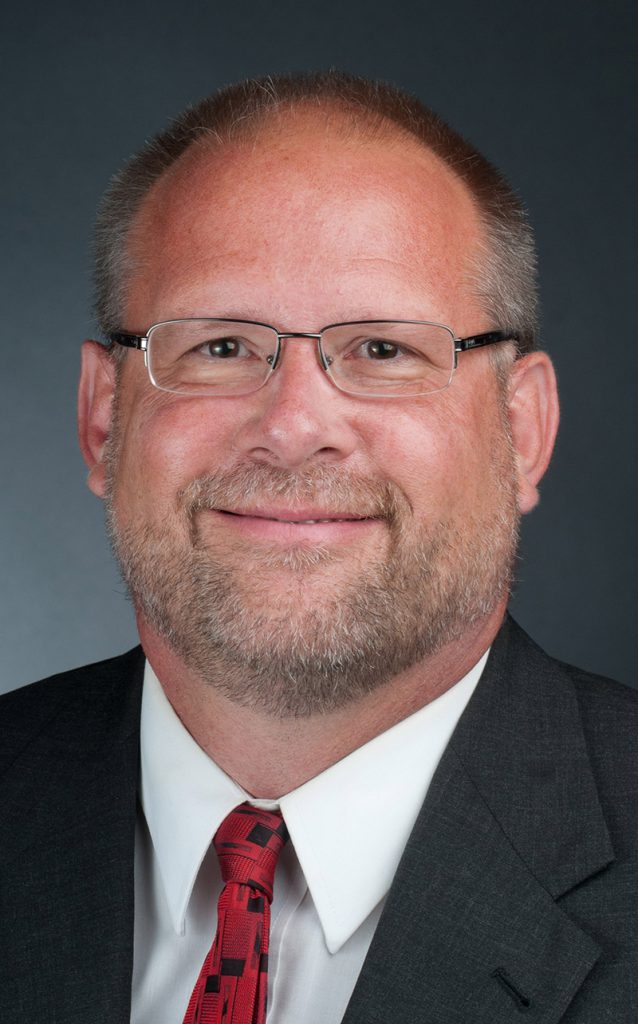
Perry R. Rettig, Ph.D., Vice President for Academic Affairs at Piedmont College in Demorest and Athens, Georgia.
Calling Out and Calling On Myself in the Face of the Coronavirus
AAL Senior Consultant J. Ross Peters offers his perspective on learning and character in light of this time of transformation. When this is all said and done, who will we be as people? What do our futures look like? To hold himself accountable, Peters creates a plan for the kind of person he will strive to be during this crisis, steering away from the temptation of being overly reactive. For inspiration, he encourages readers to look at the sorts of models we envision our students becoming, as these figures are needed now more than ever.



